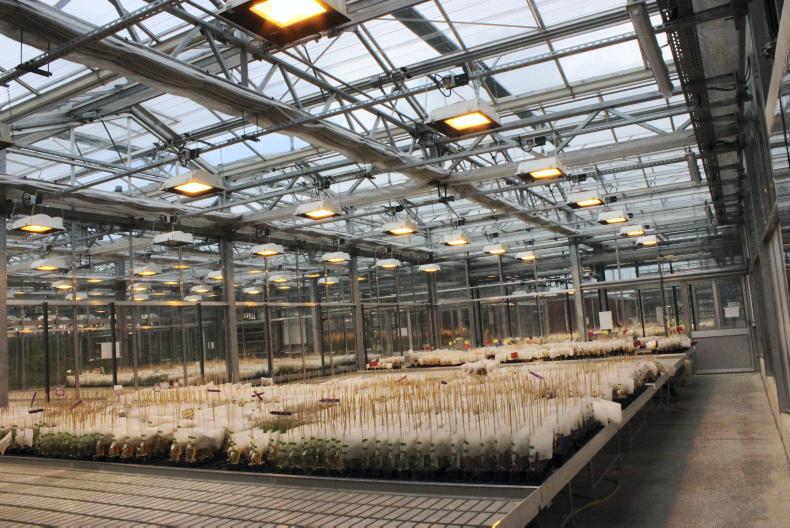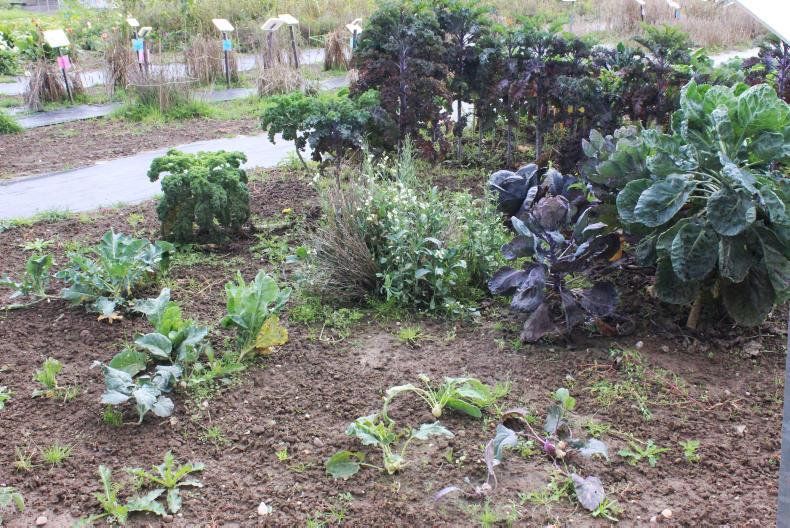A visit to the Max Planck Plant Breeding Research Institute near Cologne in Germany last year taught me many things and I want to share three of them with you in this article. One relates to BYDV, another to the significance of leaf shape and the third relates to the species that has given us so many of the crops we produce today.

The Max Planck Institute has been in existence since 1928 and it moved to its current site in Cologne in 1955. Its acting director, Prof Miltos Tsiantis, explained that it is a basic research institute whose function is to produce tools and materials that can empower plant breeding. All aspects of plant breeding are studied including genetics, genomics, biochemistry, advanced imaging, computational modelling, etc.
In doing this, the institute produces model species for a range of crops, one of which is barley. Its 384 staff work in four departments:
Much of the work is targeted at understanding plant trait mechanisms. This involves work on very many specific topics, one of which is on flowering in barley. Miltos also explained that the institute has an outreach strategy and it is actively involved in helping the public to understand the evolution of crop production and plant breeding.
In doing this, it operates what it calls a “science barn”, which might be described as a laboratory in a farmyard where visitors can go to see science in action and get access to microscopes etc to see things up close and personal.
Demonstration garden
One of the things done to show the importance of plants to the general public is to produce what it calls a demonstration garden. In this, it grows plants from all the major crop species, as well as the plants from which they were bred, to help show people the many ways in which plant breeders contribute to modern society and food production.

I think this garden might be better referred to as a living museum of food and plant production systems. I saw things there that I never expected to see such as the landrace species of wheat and barley from which all modern varieties and genetic variability were derived. These cereals would not impress any of us today with their small heads and poor standing ability but they show the progress that plant breeders have made.
I also saw the original plant from which corn or maize was developed (see picture left). This is much more like a vegetative garden plant which grows up to 0.4m in leafy clumps. But close examination showed tiny cobs down in the vegetation. From this, breeders have developed the much taller hybrid maize plants that we know today, with grain yield capacity of well over 12t/ha.
The brassica patch was even more interesting. Amidst an array of crops such as cabbage, cauliflower, broccoli, kale, fodder rape, stubble turnips, mustard, oilseed rape, swedes, brussels sprouts, kohlrabi, etc, was the wild kale plant from which these crops were derived.
As well as these, one could see most other global crop species with crops such as millet, sorghum, beet, pulses and many other ornamental plant species.
Leaf shape
One of the interesting areas of research explained how leaf shape is controlled in plants and Miltos outlined some of the consequences of its findings. About 30 years ago, scientists discovered that leaf shape was affected by the presence of the RCO gene. The study of this gene led to the production of new technologies which effectively enable scientists to watch the leaf taking shape and to see how the concentration of certain substances control this development.
These technologies now enable scientists to see growth patterns at molecular, cell, organ and plant level. And they can effectively see these as coloured photos.
The presence of the RCO gene gives very local growth differentiation and it causes some areas on the leaf to grow much less than others. Prior to these findings, it was believed that the gene responsible accelerated growth where the lobes developed on such leaves.
One of the unexpected findings of this research was that plants that carry the RCO gene also have a higher rate of photosynthesis and they produce heavier seeds. While it is not yet known what species this gene might have an affect in, further work is under way to try to understand why plants with lobed leaves would have a higher photosynthesis capacity.
Work on BYDV
Of greater relevance to Irish growers is a recent study on BYDV outlined by Prof Benjamin Stich. His specific research work was on maize but his story was very interesting. He describes the life cycle of the bird cherry aphid as follows:
The study examined if there was real resistance to BYDV present in maize varieties. Bird cherry aphids were multiplied on BYDV-infected wheat plants and then transferred, by hand, to the leaves of maize plants to see if individual varieties became infected or not. Some did, some didn’t. They then crossed resistant, tolerant and susceptible lines and repeated the infection process on these.
The differences seen in the crosses could be shown in genetic mapping. This enabled them to find the specific genes that were involved in the resistance process. Further examinations indicated that the specific genes seemed to produce a glycerine-rich protein which, they believe, reduces the virus spread within the plant.
Knowing the genes that are responsible enables the breeders to use genetic markers to check for the presence of the genes in all subsequent breeding crosses without having to grow the plants in the field and wait for infection. However, the scientists are uncertain if these genes actually stop the spread of the virus in the plant or possibly prevent infection by inhibiting the sucking and injection process of the transmitting aphid initially. They are now attempting to answer this question.
Asked if this gene could be used in other cereals, Benjamin said that he does not know yet. But he could say that gene mechanisms are being examined in small grain cereals and that the one found in maize is not yet among those being examined in barley.